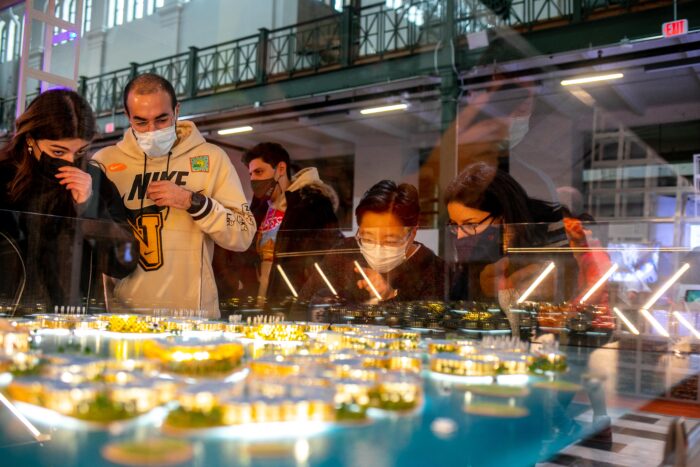- What We Do
- Understanding your audience
- Engaging new audiences
- Designing experiences
- Building loyalty
Culture segments and eco-capital
Culture Segments is a fundamental part of what we do here at MHM. The segments, and all we now know about them, provide the organisations that we work with a way of strategically thinking about a range of things: which events should we prioritise? How should we structure our membership scheme? What language will best resonate with our target audience? How should we lay out our cafe?
We already have a virtual warehouse of information about what the segments are looking for from their arts engagement, but also how they spend their spare time, what kinds of images, words and experiences will pique their interest. And we’re learning more all the time.
Learning more about the segments’ environmental behaviours
In particular, as attention increasingly turns to the earth crisis, we’ve been looking at how the segments respond to the environmental terrain that lies ahead – and we’ve learnt that the pro-environmental habits of the Culture Segments are hugely varied. And why wouldn’t they be? In our golden questions that ascertain the segments, we ask about time spent in nature, self-direction, concern for the future, and spirituality: all things that will influence someone’s eco-related thoughts and behaviour.
One of the first things we noticed was that Essence are environmental trailblazers. This segment is more likely to carry out a whole range of pro-environmental behaviours; but they’re particularly big on behaviours that they can carry out on their own: in their own homes and in their purchasing power.
Expression are also champions of pro-environmental behaviour. But this segment love community-based activities, such as litter picking, joining local groups and volunteering. Other segments too had quirks: Affirmation are inclined towards carbon-reduced travel, Stimulation want to protest, Enrichment are diligent recyclers. What we didn’t know, was why the segments were inclined towards these behaviours.
We had some clear hypotheses: for example, we know Essence are independently-minded, Expression are community-spirited and Affirmation are conscientious in their choices. But we needed an extra layer of psychographics to get to grips with the underlying values that were driving these things.
Using eco-capital to enhance our understanding
We’ve been working on a concept that we’ve called eco-capital. It’s one of the number of things that we’ve been looking to ‘layer on’ to our understanding of the Culture Segments. In it, we’ve looked at academic thinking of what drives people to pro-environmental behaviours and used our own experience to supplement this.
Eco-capital is made up of seven pillars of what prompts people into action around the environment:
- Enjoyment of nature
- Environmental threat
- Environmental activism
- Altering nature
- Personal conservation behaviour
- Empathy
- Agency
We use one or two fundamental questions to score people for each of the pillars. For example, we ask people about perceived imminence of experiencing a major ecological catastrophe for environmental threat, and their views on whether their individual actions make a difference for agency. And it allowed us to gain greater depth of understanding of what drives the segments to act for the good of the planet, or not.
Essence score highest for agency. They’re surer than any other segment that their actions make a difference, which explains their clear personal choices for the environment. Expression are highly empathetic: they feel the pain of both the planet and other humans and act from an emotional standpoint. Affirmation have a strong sense of environmental threat, but low agency, leaving them paralysed in relative inaction.
Putting it into action

Visitors at FUTURES Remixed Family Day on opening weekend, Courtesy Mariah Miranda.
These understandings have given us more depth and nuance in supporting clients to design exhibitions, communications and experiences that will resonate with the various segments and perhaps coax them into thinking even more about what they can do to slow down the earth crisis.
As those in Essence are so active, they want to see others doing the same: they don’t want to learn more about our collective fate, they want to see what you’re doing to play your part. Anacostia Community Museum’s Food for the People exhibition speaks to this segment perfectly.
Expression’s empathy means that they’ll need human faces and human stories to really connect with content: voices, videos, and real interactions over statistics and graphs. SFMOMA’s SOFT POWER achieved this very successfully.
Affirmation will likely be plummeted into deeper despair if things are too bleak. They’ll need to understand the impact of collective action for it to feel worthwhile doing anything. Help them to learn this and show them hope, as the Smithsonian has done with Futures.
The next step?
If you’d like to find out more about eco-capital and how we can help your organisation to deepen its cultural audience understanding and encourage environmental engagement, please contact laura.karban@mhminsight.com
Images:
What is Food Justice? courtesy of Anacostia Community Museum
Visitors in awe of an Oceanix floating city model at FUTURES Remixed Family Day opening weekend by Mariah Miranda - Engaging new audiences
- Understanding your audience
